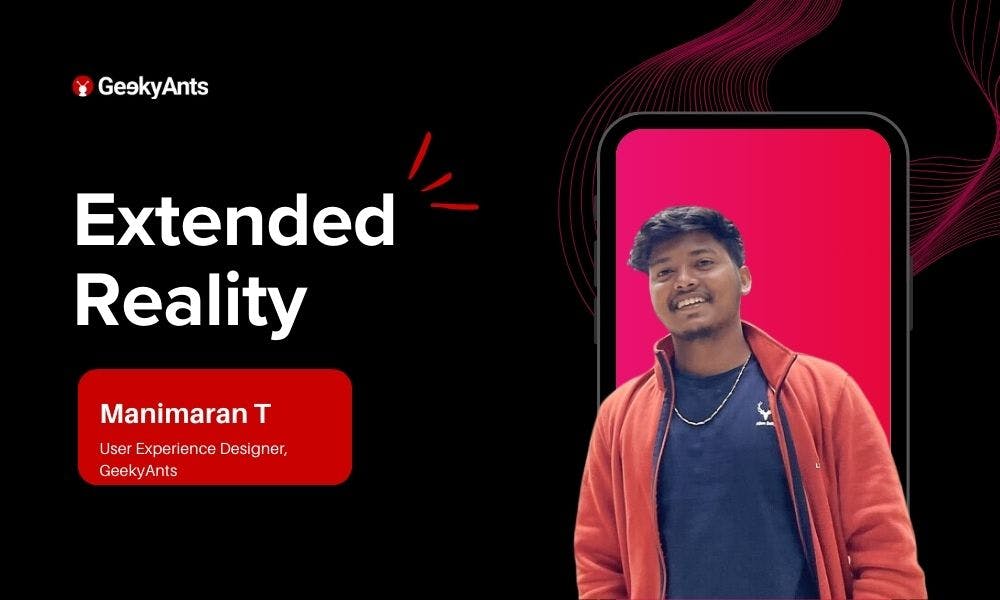Table of Contents
Understanding and Designing for Extended Reality
Author

Date

Book a call
In today's digital age, the boundaries between the physical and digital worlds are blurring more than ever before, thanks to the advent of extended reality (XR). XR encompasses a suite of technologies that immerse users in digital environments, reshaping interactions with the physical world.
Extended reality (XR) is a revolutionary technology that seamlessly integrates virtual reality (VR), augmented reality (AR), and mixed reality (MR) into a unified experience. It transports users into interactive digital realms while interacting with real-world elements.

Traditional map applications often fall short due to the disconnect between 2D representations and 3D reality. XR enhances navigation by providing immersive, real-time guidance directly within the user's field of vision, eliminating confusion and enhancing spatial awareness.
- Seamless City Navigation: Imagine navigating a city with real-time directions seamlessly displayed before your eyes through smart glasses, replacing the limitations of traditional 2D maps. XR reshapes how we interact with physical spaces, providing intuitive and accurate guidance.
Transforming Medical Practices with XR
XR is revolutionizing medical training, enabling practitioners to simulate complex procedures like CPR through immersive headsets. This not only enhances training efficiency but also reduces reliance on physical models.
- Enhanced Medical Training: Medical professionals can practice intricate procedures in a virtual environment, improving skills and confidence before performing them on real patients. XR-based simulations offer a safe and effective way to train healthcare providers.
The Spectrum of Reality Technologies

Before delving deeper into XR, it is essential to understand its foundational technologies:
- Virtual Reality (VR): Fully immerses users in digitally constructed environments, fostering autonomy and natural interactions.
- Augmented Reality (AR): Overlays digital content onto the physical world, enabling real-time interactivity and information visualization.
- Mixed Reality (MR): It allows digital objects to interact with the real world, enhancing spatial awareness.
Types of Virtual Reality Experiences

XR offers varying levels of immersion within virtual environments, let us check out a few:
- Non-Immersive VR: Similar to computer games, offering limited immersion.
- Semi-Immersive VR: Provides enhanced immersion while maintaining awareness of the physical world.
- Fully Immersive VR: Delivers a complete sense of presence within the virtual environment, with natural interactions and real-time responsiveness.
- 360-Degree VR: Enables exploration of static virtual environments, typically within defined spatial limits.
Diverse Applications of Augmented Reality (AR)

The list of technologies that fall under the umbrella of Augmented Reality (AR) include the following:
- Marker-Based AR: Triggers digital content through specific markers like QR codes or patterns.
- Markerless AR: Utilizes GPS and location data for content placement, exemplified by popular apps like Pokemon Go.
- Projection-Based AR: Projects digital content onto physical surfaces, enhancing visual experiences in diverse contexts.
- Overlay AR: Overlaps digital content onto physical objects, creating informative or interactive displays.
Embracing Spatial Computing

Spatial computing, a core concept within XR, emphasizes spatial awareness and interaction design. It involves understanding and designing for immersive experiences within three-dimensional spaces.
The Future of XR and Spatial Design
As XR continues to evolve, understanding its design principles and constraints becomes crucial. Unlike traditional interfaces, XR demands a holistic approach to design, considering the complexities of 360-degree environments.
Directing the XR Experience
Designing for XR parallels directing a movie, focusing on visual communication and storyboarding:
- Visual Communication: Directing users through XR experiences akin to directing viewers in a film.
- Storyboarding: Mapping out the XR journey to guide user interactions.
Techniques in XR Design
XR design employs three core techniques:
- Bodystroming: Interacting with physical props in the real world, akin to directing scenes.
- Acting: Role-playing scenarios within XR, reflecting real-world actions like payment interactions.
- Storyboarding: Conveying overall flow through storyboarding, adapting to 3D spatial design.
Spatial Design in XR
XR spatial design transcends traditional 2D interfaces. Here is how:
- 3D Interaction: Embraces height, length, width, and depth, transforming user engagement.
- Overcoming Limitations: XR challenges static interactions, offering dynamic, immersive experiences.
Achieving Presence in XR
Presence is the essence of XR, making users feel part of virtual environments:
- Sensory Incorporation: Sight, touch, hearing, balance, proprioception, smell, temperature, and taste contribute to presence.
- Challenges: Smell, taste, and temperature simulation pose ongoing research and development challenges.
Interaction Design for XR
Interaction design in XR emphasizes natural, physical manipulation:
- Natural Interaction: Mimicking real-world actions for intuitive user experiences.
- Standardized Gestures: Adopting common gestures to enhance user familiarity and usability.
Evolving XR Technology
Advancements in XR technology redefine user inputs and experiences:
- Input Devices: From hand tracking cameras to neural wristbands and smartwatch integrations.
- Design Tools: Unity, Unreal Engine, SDKs (e.g., MRTK, Interaction SDK), Blender, and no-code platforms facilitate XR development.
Parting Thoughts
Extended reality represents a paradigm shift in human-computer interaction, blending the digital and physical realms into a cohesive experience. By embracing XR technologies, industries can unlock innovative solutions that reimagine how we perceive and interact with our surroundings.
Designing for extended reality demands a holistic approach, leveraging storytelling, spatial design, and immersive technologies to create compelling user experiences. As XR evolves, incorporating user feedback and embracing emerging technologies will be key to pushing the boundaries of interactive design. Stay tuned for more insights on XR design principles and practical considerations for developing immersive experiences.
Don’t snooze on the detailed discussions by Manimaran T. Check out Part 1 below ⬇️
And here is Part 2:
Dive deep into our research and insights. In our articles and blogs, we explore topics on design, how it relates to development, and impact of various trends to businesses.



